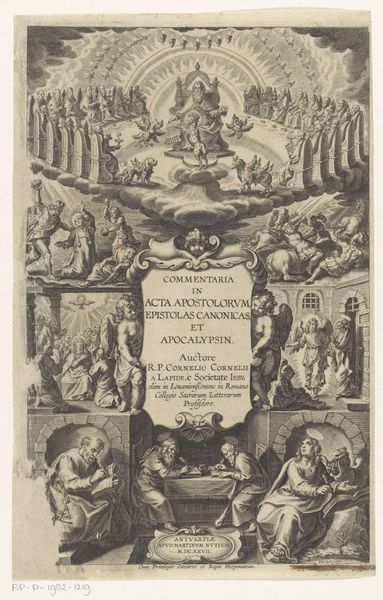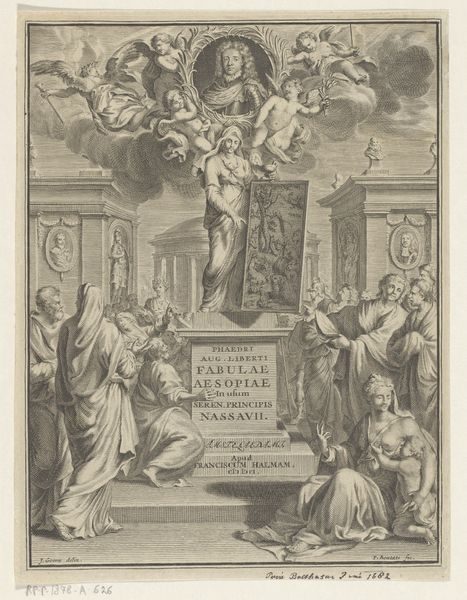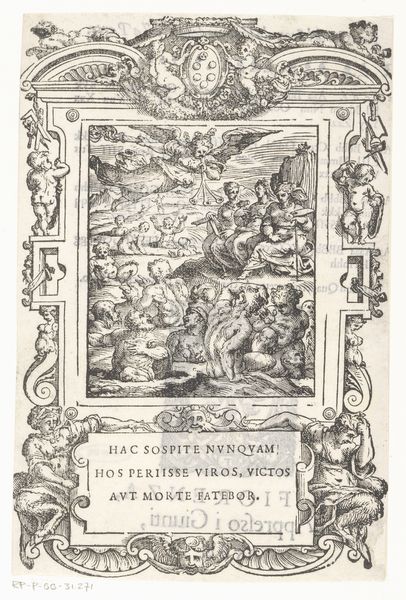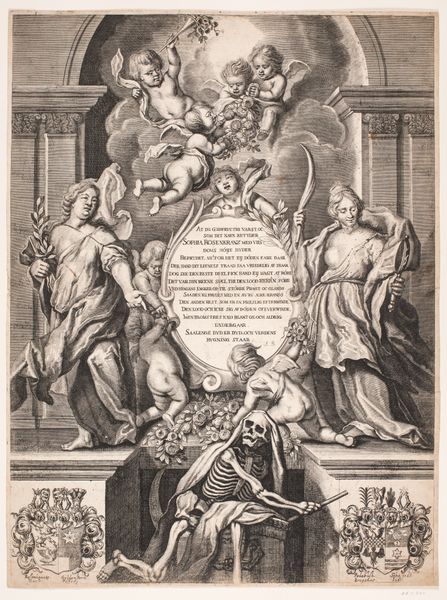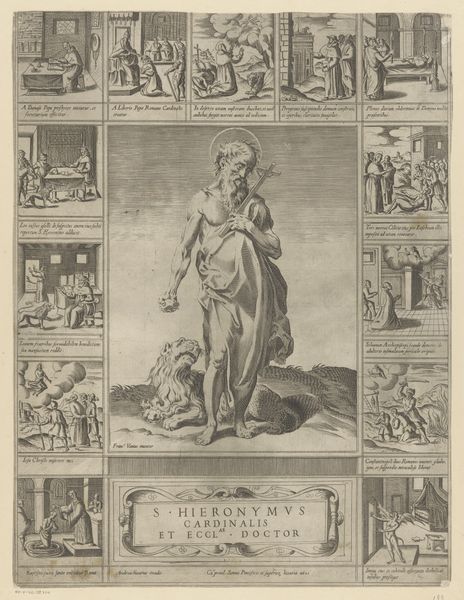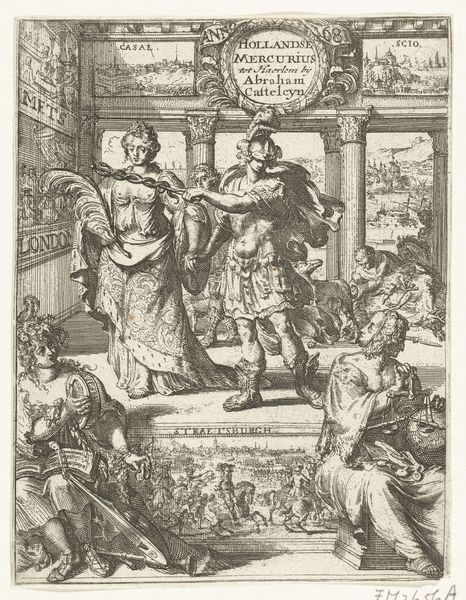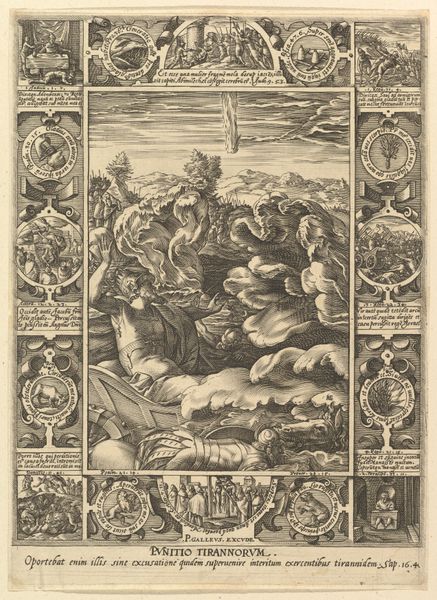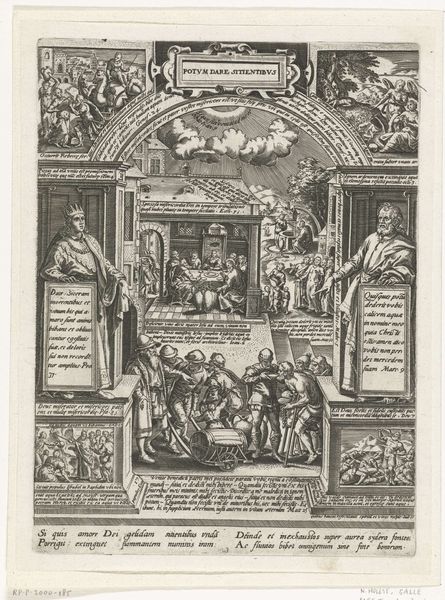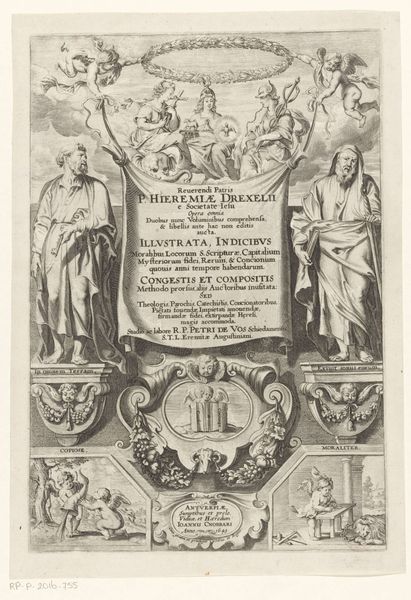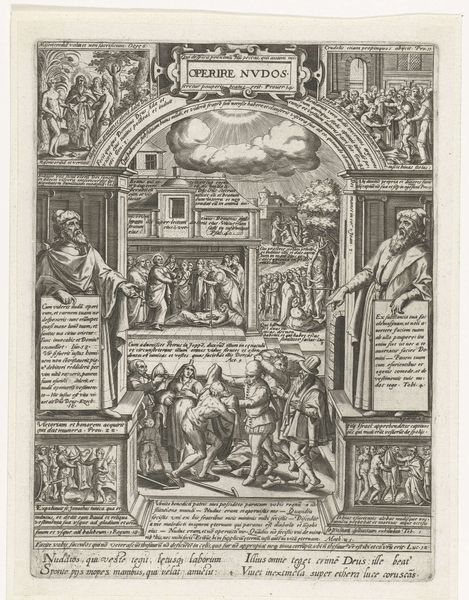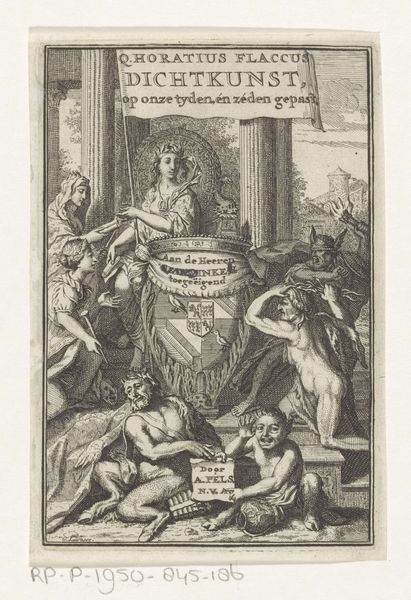
print, engraving
#
allegory
#
baroque
# print
#
history-painting
#
engraving
Dimensions: height 330 mm, width 208 mm
Copyright: Rijks Museum: Open Domain
Curator: Immediately, what strikes me is the dynamism captured in what is, ostensibly, a monochromatic print. There's so much movement implied. Editor: I agree. There's this kind of organized chaos, like a swirling vortex of scholarship and putti! Let’s unpack this; the engraving, made in 1643, is titled *Allegorie met Geschiedenis, Geleerdheid en Waarheid* – which translates to *Allegory with History, Scholarship, and Truth*. It’s by Theodor van Merlen. Curator: And how meticulously van Merlen utilizes the Baroque style! The composition draws the eye upwards. Note how the central text, emblazoned on what looks like a draped banner, is framed by allegorical figures representing erudition and truth. It almost appears as if it emerges from darkness into divine illumination. Editor: Totally. The central text promotes the Acta Sanctorum – "Acts of the Saints" – and references Ioannes Bollandvs and Godefridvs Henschenivs who are named as Jesuit theologians whose scriptural study underpins their work, suggesting it unveils something long obscured. It seems heavy duty! Curator: The details are important. The hourglass next to the figure of Veritas is particularly striking. An hourglass denotes Time – and so implies something beyond it. Moreover, Eruditio directs to the importance of old erudition or sources. Both underpin that this allegory not only speaks of truth and learning, but that Truth, is revealed through the relentless examination of historical sources. Editor: Look, the figures have this luminescence – not really highlighting any darkness in this. So I wonder… were they trying to portray truth and historical insight as undeniably uplifting? Like, a break from the shadows, into enlightenment? It’s Baroque so sure, intense – but intensely optimistic, somehow. Curator: The chiaroscuro is cleverly used. Light doesn't only illuminate, but suggests hidden dimensions, and therefore it is inviting inquiry – a fundamental process towards the unveiling of what is true and veritas, afterall. So, while optimism can definitely be extracted, I can also feel the density, the demand, and intensity of intellectual labour. Editor: Good point. It makes one reflect on where you place your own "truths." The "Acts of the Saints," in the artist’s vision, isn’t passive, it’s energetic – which for 1643… it must've felt kind of revolutionary? Curator: Precisely! We started talking about movement. Van Merlen presents learning not as a destination, but as an animated quest! Editor: Beautiful. Let's dive into another work!
Comments
No comments
Be the first to comment and join the conversation on the ultimate creative platform.

